
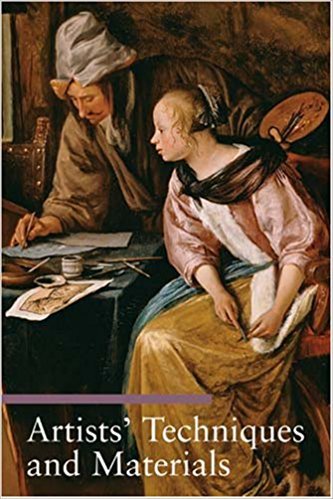
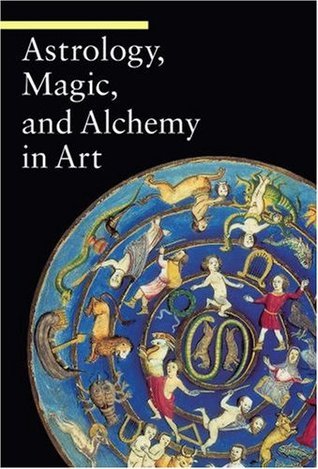
A Guide to Imagery
Series · 18
books · 2001-2010
Books in series

#1
Angels and Demons in Art
2003
This sumptuously illustrated volume analyzes artists' representations of angels and demons and heaven and hell from the Judeo-Christian tradition and describes how these artistic portrayals evolved over time. As with other books in the Guide to Imagery series, the goal of this volume is to
help contemporary art enthusiasts decode the symbolic meanings in the great masterworks of Western Art.
The first chapter traces the development of images of the Creation and the Afterworld from descriptions of them in the Scriptures through their evolution in later literary and philosophical works. The following two chapters examine artists' depictions of the two paths that humans may take, the
path of evil or the path of salvation, and the punishments or rewards found on each. A chapter on the Judgment Day and the end of the world explores portrayals of the mysterious worlds between life and death and in the afterlife. Finally, the author looks at images of angelic and demonic beings
themselves and how they came to be portrayed with the physical attributes—wings, halos, horns, and cloven hooves—with which we are now so familiar.
Thoroughly researched by and expert in the field of iconography, Angels and Demons in Art will delight readers with an interest in art or religious symbolism.

#2
Artists' Techniques and Materials
2004
An artist's materials—the bold brushstrokes of a Van Gogh oil painting, the sparkling gold leaf in a Byzantine mosaic, the fragile translucence of a porcelain vase—are not just the accessories of his or her work. They are the physical embodiment of the artist's creative vision and a
reflection of the historical context in which they were used.
This latest volume in the popular Guide to Imagery series discusses the materials and processes used in eight painting, drawing, printmaking, sculpture, mosaics, ceramics, glass, and metalwork. Within each of these categories, Antonella Fuga examines the range of materials and techniques
that have developed over the centuries. For instance, in the chapter on drawing, she analyzes the use of charcoal, red chalk, and pastels, among other media. Capsule descriptions in the margins list essential information about the subject under discussion, and details of the artworks employed as
examples are called out. The book concludes with a brief overview of contemporary techniques.
Richly illustrated with artworks from many of the world's important museums, this book provides art enthusiasts with new insights into the creation of many of the world's great masterpieces.

#3
Astrology, Magic, and Alchemy in Art
2004
From antiquity to the Enlightenment, astrology, magic, and alchemy were considered important tools to unravel the mysteries of nature and human destiny. As a result of the West’s exposure during the Middle Ages to the astrological beliefs of Arab philosophers and the mystical writings of late antiquity, these occult traditions became rich sources of inspiration for Western artists.
In this volume from the popular Guide to Imagery series, the author presents a careful analysis of occult iconography in many of the great masterpieces of Western art, calling out key features in the illustrations for discussion and interpretation. Astrological symbols decorated medieval churches and illuminated manuscripts as well as fifteenth-century Italian town halls and palaces. The transformational symbology of magic and alchemy that enlivened the work of a wide range of Renaissance artists, including Bosch, Brueghel, Dürer, and Caravaggio, found renewed expression in the visionary works of nineteenth-century artists, such as Fuseli and Blake, as well as in the creative output of the twentieth century’s Surrealists.
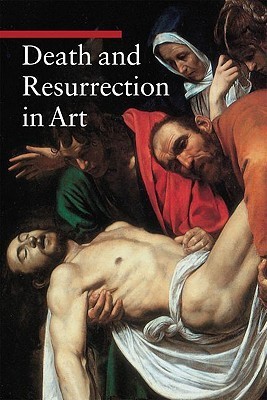
#4
Death and Resurrection in Art
2007
As one of the unavoidable realities of human existence, death is also one of the oldest and most common themes in the history of art. From Egyptian tomb paintings and battle scenes on Greek vases by anonymous artists, to depictions of the Crucifixion and Resurrection of Jesus by the great Renaissance masters, to contemporary encounters with these subjects by such artists as Damien Hirst and Andres Serrano, the contents of this book highlight three thousand years of the iconography of death and resurrection. While focusing on the Western artistic tradition, the book also includes many artworks from Asia, Africa, and Oceania. De Pascale explores depictions of these two subjects thematically, through chapters on violent death, ceremonial tributes to the departed, allegorical depictions of death, and the journey to the afterlife. The book concludes with an examination of symbolic representations of the victory of life over death.
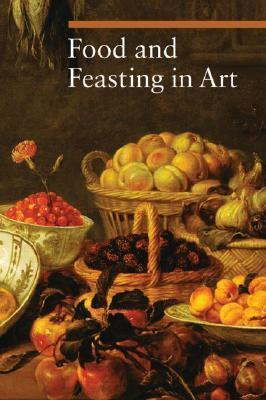
#5
Food and Feasting in Art
2008
Deliciously illustrated with masterpieces of western art, this latest volume in the Guide to Imagery series explores the rituals, customs, and symbolism of food and dining.
The book describes the significance of food and feasts as told in scripture and in the lives of the saints; food and dining in Greek and Roman mythology and in later literature and history; and how artists through the ages have created allegories of gluttony and odes to the sense of taste, using, for example, artfully positioned fruits and vegetables in the golden age of the painted still life.
Also discussed is the role of table settings in relation to such ceremonies as formal dinners and royal banquets. Lastly, a close-up look at the symbolic meanings of individual foods and drinks—from the artichoke, also known as “domestic thistle,” to champagne, from chili peppers to absinthe—reveals a figurative language well known to artists of the time but perhaps forgotten by contemporary diners.
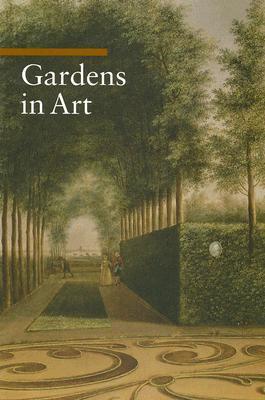
#6
Gardens in Art
2005
This illustrated text presents readers with an intelligent and engaging analysis of the constituent elements of gardens - both real and imagined - that uncover their often hidden symbolic meaning. It uses over 380 paintings to provide a continuous visual record of the myriad and ephemeral form of the garden.
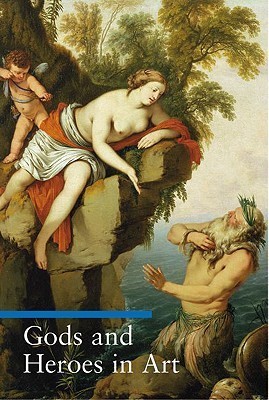
#7
Gods and Heroes in Art
2003
Gods and Heroes in Art aims to help museum patrons and art lovers recognize the legendary characters of classical antiquity in art. The characters are each described in entries summarizing their distinctive stories, their special attributes, and the ways in which artists have depicted them. Each entry is richly illustrated with reproductions of works of art in which the god or hero is pictured, giving readers a chance to examine images of the character and to understand the work of art better.
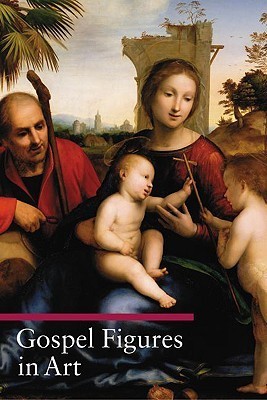
#8
Gospel Figures in Art
2002
In viewing the great works of sacred Western art, many people find difficulty in understanding the stories and identifying the figures portrayed in them. This informative guide decodes these often-mysterious scenes and reveals a vibrant world of images from the Christian tradition for museum
visitors, students, and art enthusiasts alike.
Gospel Figures in Art examines depictions of stories and figures from both the New Testament's canonical gospels (the books of Matthew, Mark, Luke, and John) and the apocryphal gospels (early Christian writings excluded from the New Testament because of their unsubstantiated authorship), which
served as rich sources of inspiration for medieval and Renaissance artists. Illustrated with masterpieces from many of the world's premier museums, the art works provided as visual references are carefully analyzed. Sections are devoted to the principal figures in the life of Jesus Christ-his family
and the evangelists-and to the major biographical turning points: his birth and baptism, his public life, the miracles and good deeds he performed, his crucifixion, resurrection, and the events that followed. This indispensable resource makes the icons and narratives of sacred art come to
life.
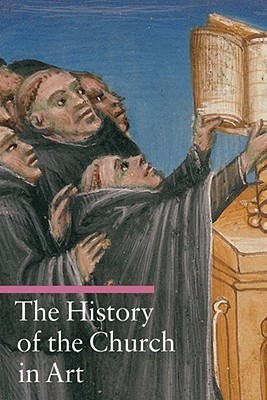
#9
The History of the Church in Art
2009
In this richly illustrated volume Rosa Giorgi argues that because much of Western art depicts key events, leaders, and practices in the history of the Christian Church, knowledge of that history is critical to an appreciation of many of our great masterpieces. Giorgi begins by analyzing artistic representations of liturgical objects, including altars, crosses, and censers, and follows with an examination of the duties and vestments of the variety of clerics, ranging from minor clerks to the pope. Both the rituals of the monastic life and worshippers’ devotional practices are well documented in paintings depicting prayer, communal meals, funeral rites, religious processions, and cult practices. The author next turns to artworks that capture important episodes from the Church’s history, including crusades and pilgrimages, the Inquisition and the Reformation, and power struggles between popes and secular rulers. Giorgi ends with an analysis of the lives and portraits of the notable leaders who contributed to this fascinating history, from Peter and Paul to Thomas More to Pope Paul VI .
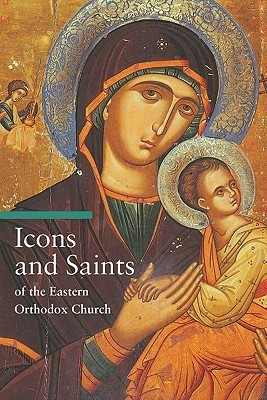
#10
Icons & Saints of the Eastern Orthodox Church
2004
An icon (from the Greek word "eikon," "image") is a wooden panel painting of a holy person or scene from Orthodox Christianity, the religion of the Byzantine Empire that is practiced today mainly in Greece and Russia. It was believed that these works acted as intermediaries between worshipers
and the holy personages they depicted. Their pictorial language is stylized and primarily symbolic, rather than literal and narrative. Indeed, every attitude, pose, and color depicted in an icon has a precise meaning, and their painters—usually monks—followed prescribed models from iconographic
manuals.
The goal of this book is to catalogue the vast heritage of images according to iconographic type and subject, from the most ancient at the Monastery of Saint Catherine in the Sinai to those from Greece, Constantinople, and Russia. Chapters focus on the role of icons in the Orthodox liturgy and on
common iconic subjects, including the fathers and saints of the Eastern Church and the life of Jesus and his followers. As with other volumes in the Guide to Imagery series, this book includes a wealth of color illustrations in which details are called out for discussion.
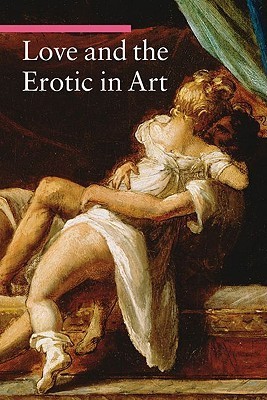
#11
Love and the Erotic in Art
2001
Even in the Western world, which seems completely accustomed to a widespread appearance of risqué images, an erotic painting from five hundred years ago can still manage to create a sensation. This book, the fifteenth title in the popular Guide to Imagery series, is a delightful romp through
the portrayal of love and sexuality in art—age-old subjects depicted in all cultures. The volume surveys Western artworks illustrating more or less explicitly delicate or amorous subjects. The gamut of possibilities is vast, ranging from chaste tenderness to overwhelming frenzies of the senses,
from Classical allusion to sexual fantasy.
A series of general themes is presented, with a detailed reading of the significance and symbolic content of the individual works illustrating each theme. In the paintings of the past, the reader will encounter gestures, objects, places, and situations that seem familiar and that offer the
traditional setting of "love scenes" from every epoch. The volume closes with a chapter highlighting some of the most famous couples of all time.
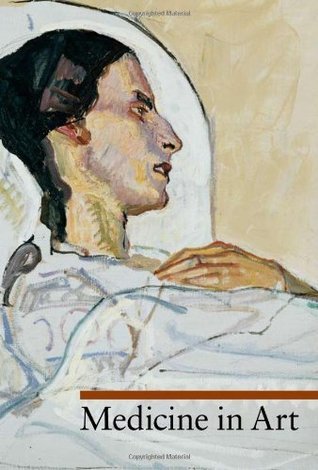
#12
Medicine in Art
2010
This abundantly illustrated volume offers an exploration of the depictions of illness and healing in Western artworks that range from Egyptian wall carvings to medieval manuscripts, and from paintings and sculpture by the great masters of the Renaissance such as Michelangelo and Leonardo da Vinci to twentieth-century artists such as Matisse and Magritte. Thematic chapters cover the examination of patients and their various maladies including disabilities and mental illnesses; healing and medical treatments; and the sufferings of patients and their hopes for cures and recovery. Psychological anguish—as represented in The Expulsion of Adam and Eve by Masaccio and Munch’s The Scream—is treated along with the physical manifestations of pain. This volume, the seventeenth in the popular Guide to Imagery series, offers analyses by both an art historian and a practicing physician who comment, respectively, on the cultural context in which specific artworks were created and the level of technical knowledge available at that time, an approach that makes for a fascinating look at a topic that has figured frequently in the Western artistic tradition.
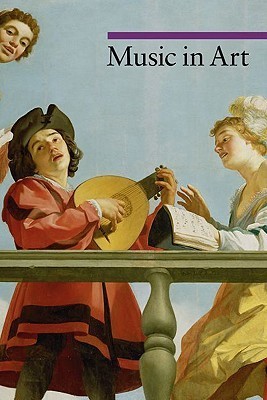
#13
Music in Art
2009
This abundantly illustrated, full-color volume provides an overview of the topic of music, musical instruments, and musical performance throughout the centuries, as depicted in Western works of art ranging from ancient sculpture to Renaissance paintings to modern art. It serves as a handy guide for anyone desiring a comprehensive, yet succinct, answer—a first source for the academic scholar, university student, or educated layperson. It features sections devoted to individual instruments and sections focused on more general concepts, such as musical symbols and allegories and the instruments used in religious contexts. A fascinating musical, historical, and art-historical narrative accompanies the full-color works by artists including Anthony van Dyck, Hieronymus Bosch, Gustav Klimt, Francisco Goya, Marc Chagall, Man Ray, and the Antimedes Painter. The appendix contains lists of subjects and of artists and includes a glossary.

#14
Nature and Its Symbols
2003
Nature and Its Symbols is the fifth volume in the series A Guide to Imagery, reference guides whose goal is to explain the symbols used in art. This volume includes chapters on plants, flowers, fruits, and animals of the earth, air, and water, as well as fantastical creatures such as centaurs, griffons, and dragons. The vivid illustrations, which include paintings and tapestries from some of the world's premier museums, are accompanied by texts that offer a careful analysis of the artists' depictions of the natural world. fruit, or animal portrayed, its mythic or literary origins, and the episodes or individuals associated with it. These salient points are also called out in summary form within each entry, making the information easily accessible. The reader discovers, for example, that the iris can represent Jesus or the purity of the Virgin Mary as well as the kings of France or the city of Florence. The monkey, which can be symbolic of the devil, heresy, or bad temper, is also associated with the three wise men who travelled to Bethlehem to pay homage to the infant Jesus.
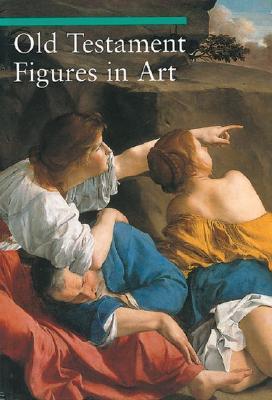
#15
Old Testament Figures in Art
2003
Throughout the Middle Ages, sacred Christian art had two objectives: to express veneration for God and to provide illustrative lessons on the Christian faith to a largely illiterate population. Continuing in the spirit of the other books in this series, Old Testament Figures in Art compiles entries on key figures and events in the Old Testament, beginning with the Pentateuch, then drawing from the historical books, the books of wisdom and poetry, and, finally, the prophetic books.
The vivid illustrations depict Old Testament scenes that occur most frequently as iconographic prototypes in Western art. Among the masterpieces featured are The Entry of the Animals into Noah's Ark by Jan Brueghel the Elder, The Sacrifice of Isaac by Rembrandt, Samson and Delilah by Peter Paul Rubens, Jacob Wrestling with the Angel by Paul Gauguin, and Isaac Receiving Rebekah as His Wife by Marc Chagall.
The accompanying texts illuminate the unique ways in which Old Testament subjects have been portrayed in Western art throughout the ages. To complement the many scriptural references, this handy volume also offers comparisons with other cultures whose stories or myths parallel those represented in the book.
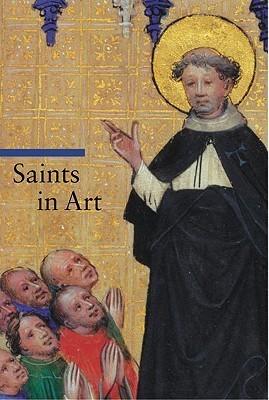
#16
Saints in Art
2002
From Agatha to Zeno, Francis of Assisi to Mary Magdalene, Saints in Arti presents the characteristic features of more than one hundred saints often encountered in sacred Western art. Each saint is introduced by a practical list of his or her unique attributes. Entries also include notes on the saints' lives and a series of visual references to help the reader recognize these exemplary figures, their histories, and their special devotions. This useful resource is illustrated with a stunning collection of masterpieces.
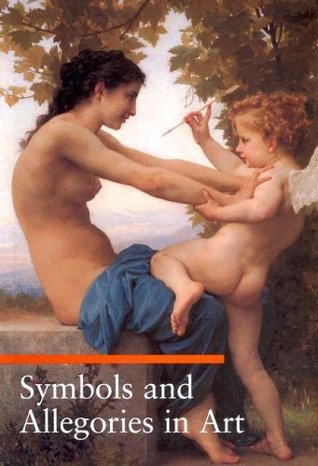
#17
Symbols and Allegories in Art
2005
From antiquity, when the gods and goddesses were commonly featured in works of art, through to the twentieth century, when Surrealists drew on archetypes from the unconscious, artists have embedded symbols in their works. As with previous volumes in the Guide to Imagery series, the goal of this book is to provide contemporary readers and museum visitors with the tools to read the hidden meanings in works of art.
This latest volume is divided thematically into four sections featuring symbols related to time, man, space (earth and sky), and allegories or moral lessons. Readers will learn, for instance, that night, the primordial mother of the cosmos, was often portrayed in ancient art as a woman wrapped in a black veil, whereas day or noon was often represented in Renaissance art as a strong, virile man evoking the full manifestation of the sun's energy.
Each entry in the book contains a main reference image in which details of the symbol or allegory being analyzed are called out for discussion. In the margin, for quick access by the reader, is a summary of the essential characteristics of the symbol in question, the derivation of its name, and the religious tradition from which it springs.
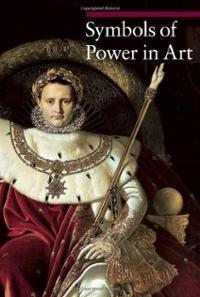
#18
Symbols of Power in Art
2005
This volume examines the ways that sovereign rulers have employed well-defined symbols, attributes, and stereotypes to convey their power to their subjects and rivals, as well as to leave a legacy for subsequent generations to admire.
Legendary rulers from antiquity such as Alexander the Great, Julius Caesar, and Constantine have been looked to as models for their display of imperial power by the rulers of later eras. From medieval sovereigns such as Charlemagne and France’s Louis IX to the tsars of Russia and the great European royal dynasties of the Hapsburgs, the Bourbons, and the Tudors, the rulers of each period have appropriated and often embellished the emblems of power employed by their predecessors. Even the second-tier lords who ruled parts of France and Italy during the Renaissance, such as the dukes of Burgundy, the Gonzaga of Mantua, and the Medici of Florence became adept at manipulating this imagery. The final chapter is reserved for Napoleon I, perhaps the ultimate master of symbolic display, who assumed the attributes of Roman emperors to project an image of eternal and immutable authority.
The author examines not only regal paraphernalia such as crowns, scepters, thrones, and orbs, but also the painted portraits, sculptures, tapestries, carved ivories, jewelry, coins, armor, and, eventually, photographs created to display their owner’s sovereign power, a vast collection of works that now forms a significant portion of the cultural heritage of Western civilization.